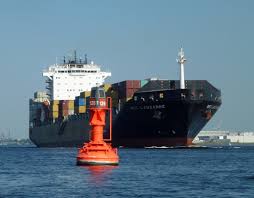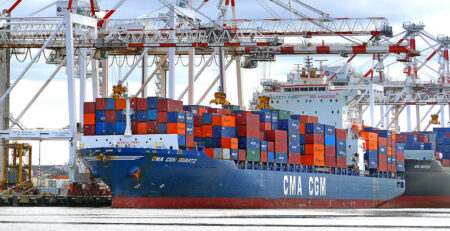Windward’s Q1 2025 report shows record vessel sanctions, GPS jamming, and tariff-driven trade disruption.

In its newly released Q1 2025 Maritime Risk Insights Report, maritime AI leader Windward has unveiled a series of disruptive trends that are reshaping the global shipping landscape. From a record number of sanctioned vessels to a surge in GPS jamming and the destabilising effects of shifting tariffs, the report paints a complex and volatile picture for global trade.
Surge in Vessel and Company Sanctions
Q1 2025 saw the highest number of sanctioned vessels since 2022, reflecting intensified global regulatory scrutiny, particularly on tankers. Windward notes that 88% of the newly sanctioned vessels were tankers, underscoring the sector’s vulnerability amidst tightening enforcement.
Equally significant is the spike in maritime company sanctions—both new and alignment designations—which hit the highest levels since early 2023. A notable 70% of these newly sanctioned companies are concentrated in five countries: Hong Kong, Seychelles, China, Russia, and the Marshall Islands, indicating a regional pattern in regulatory focus.
GPS Jamming: A Growing Maritime Threat
A sharp escalation in GPS interference has emerged as a serious concern. Windward’s analysis reveals that the average AIS (Automatic Identification System) “jump” distance caused by GPS jamming increased tenfold—from 600 km in Q4 2024 to 6,300 km in Q1 2025. This jump severely undermines real-time vessel tracking and maritime safety, effectively removing ships from traceable proximity zones.
Windward’s specialized GPS jamming unit identified three new jamming hubs in Q1 2025:
- Sudan (Red Sea): From 0 affected vessels in Q4 2024 to over 180 vessels in Q1 2025
- Djibouti (Gulf of Aden): 0 to more than 30 affected vessels
- Black Sea to Gulf of Guinea Corridor: 0 to 120+ vessels affected
These developments indicate the growing use of GPS disruption as a tool with potentially severe implications for security, insurance, and operational logistics.
Shadow Fleet Activity Increases
The report also tracks renewed activity in shadow fleets. The Comoros flag—commonly associated with vessels seeking to avoid oversight—saw a 16% increase in flag registrations since Q4 2024. This mirrors a similar spike observed in Q1 2024, aligning with the two-year anniversary of Russia’s conflict with Ukraine and related sanctions expansions. The resurgence of Comoros-flagged vessels signals that flag-hopping remains a tactic for evading global scrutiny.
Trade Lane Disruption from Tariffs
Tariff-related volatility is also wreaking havoc on trade flows. Tanker-driven trade showed steady declines throughout late 2023, but a sharp drop occurred in March 2025, likely tied to recent energy policy shifts and new tariffs. Windward attributes this downturn to:
- A sudden plunge in tanker activity, impacting energy transport
- Container and bulk shipments falling off steeply after early 2025 front-loading, as shippers anticipated new tariff enforcements
Notably, March 2025 marked a major inflection point across all major U.S. trade lanes, with reduced port calls on tanker- and container-heavy routes such as U.S.–Mexico and U.S.–Canada. This disruption highlights the disproportionate impact of oil tariffs and energy-linked regulations on overall trade.
In the U.S.–China corridor, Windward observed evidence of preemptive behavior by shippers, particularly in container and bulk movements—reflecting adaptive responses to anticipated policy shifts.
Windward’s Q1 2025 findings demonstrate how regulatory actions, technological vulnerabilities, and geopolitical tensions are converging to reshape the global maritime sector. With tanker activity now serving as a leading indicator of broader trade disruptions, the industry must adapt quickly to a reality defined by unpredictability, compliance risk, and dynamic policy landscapes.
Source: Safety4sea










